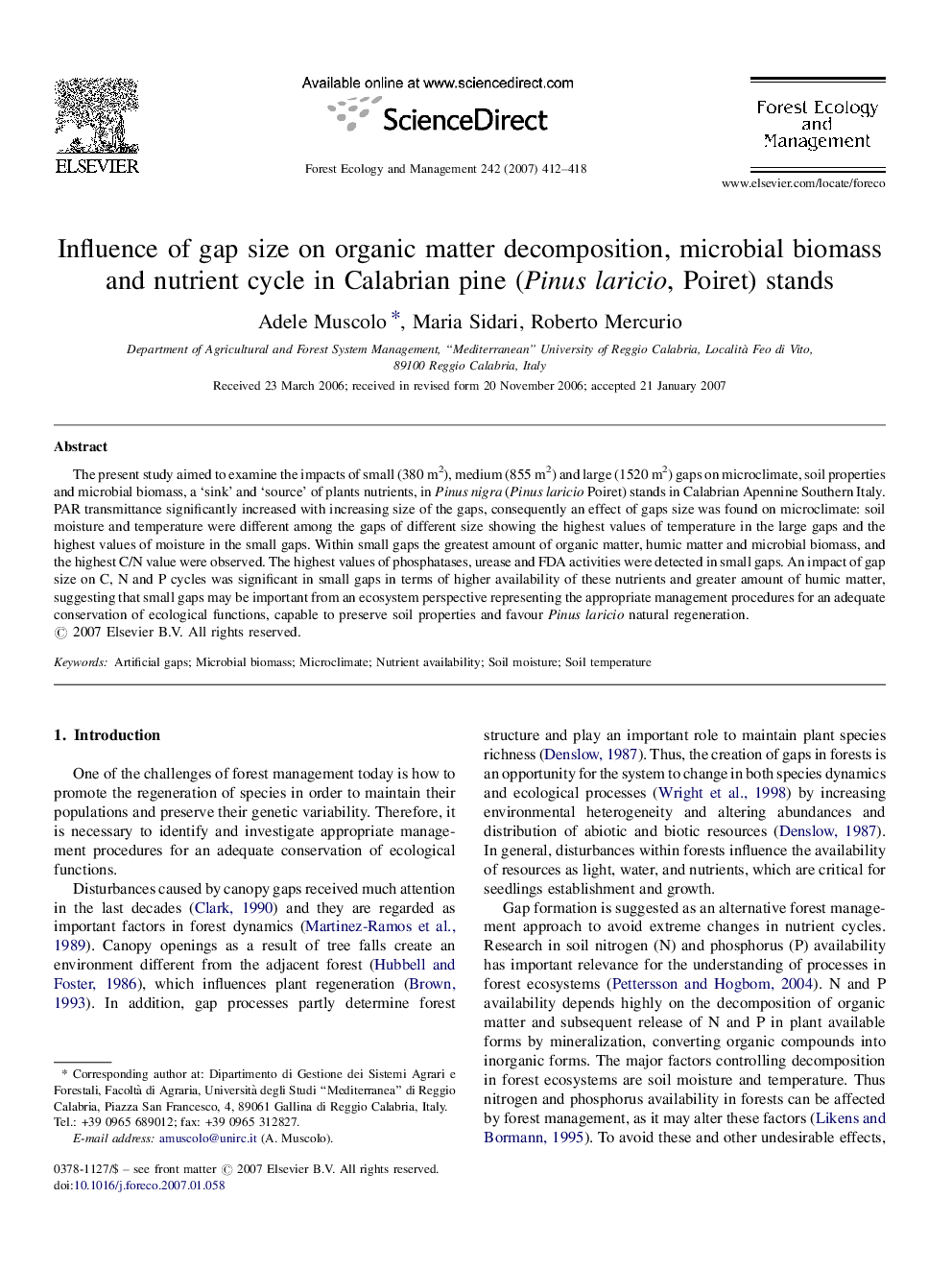| Article ID | Journal | Published Year | Pages | File Type |
|---|---|---|---|---|
| 90652 | Forest Ecology and Management | 2007 | 7 Pages |
The present study aimed to examine the impacts of small (380 m2), medium (855 m2) and large (1520 m2) gaps on microclimate, soil properties and microbial biomass, a ‘sink’ and ‘source’ of plants nutrients, in Pinus nigra (Pinus laricio Poiret) stands in Calabrian Apennine Southern Italy. PAR transmittance significantly increased with increasing size of the gaps, consequently an effect of gaps size was found on microclimate: soil moisture and temperature were different among the gaps of different size showing the highest values of temperature in the large gaps and the highest values of moisture in the small gaps. Within small gaps the greatest amount of organic matter, humic matter and microbial biomass, and the highest C/N value were observed. The highest values of phosphatases, urease and FDA activities were detected in small gaps. An impact of gap size on C, N and P cycles was significant in small gaps in terms of higher availability of these nutrients and greater amount of humic matter, suggesting that small gaps may be important from an ecosystem perspective representing the appropriate management procedures for an adequate conservation of ecological functions, capable to preserve soil properties and favour Pinus laricio natural regeneration.
